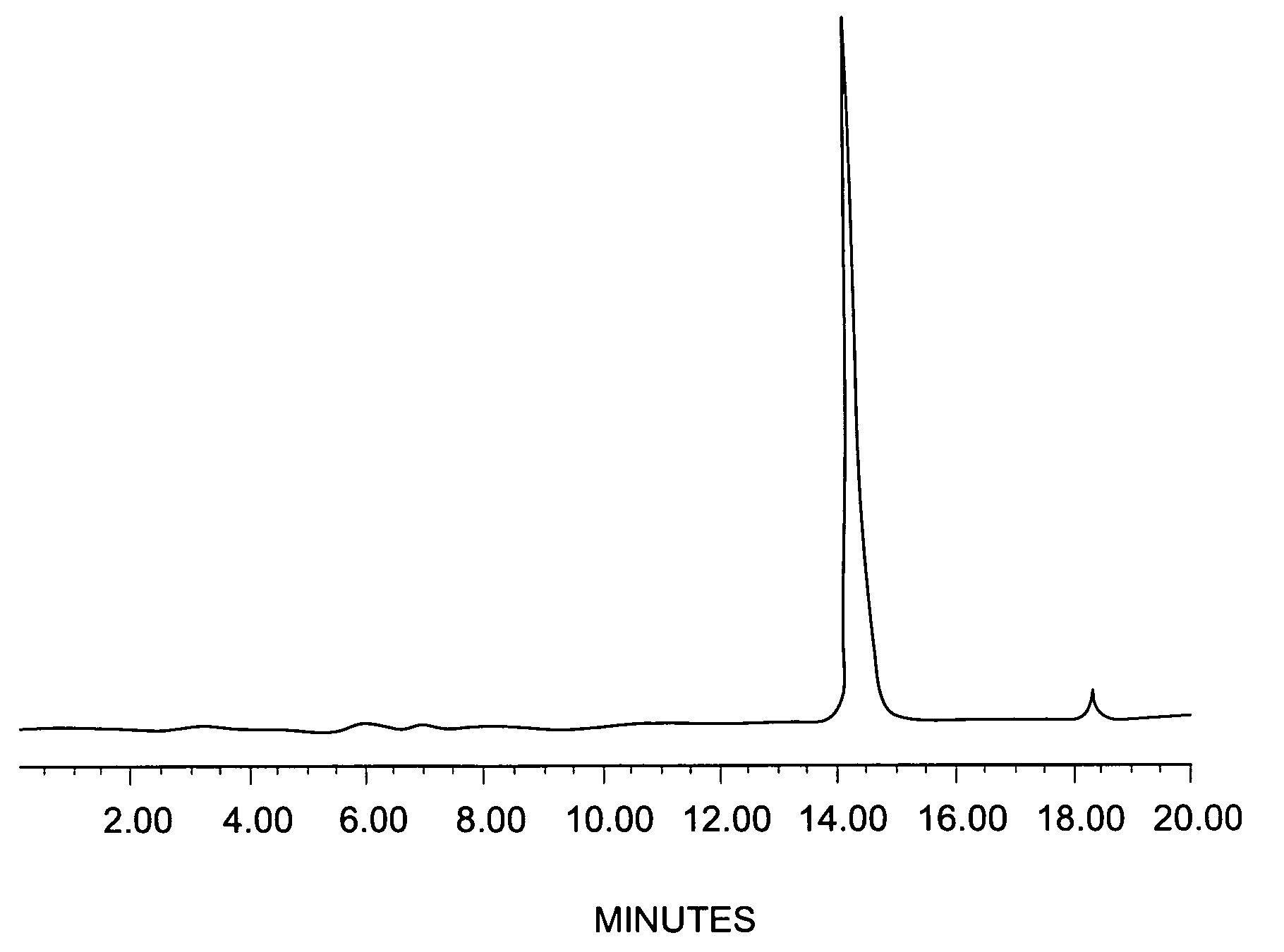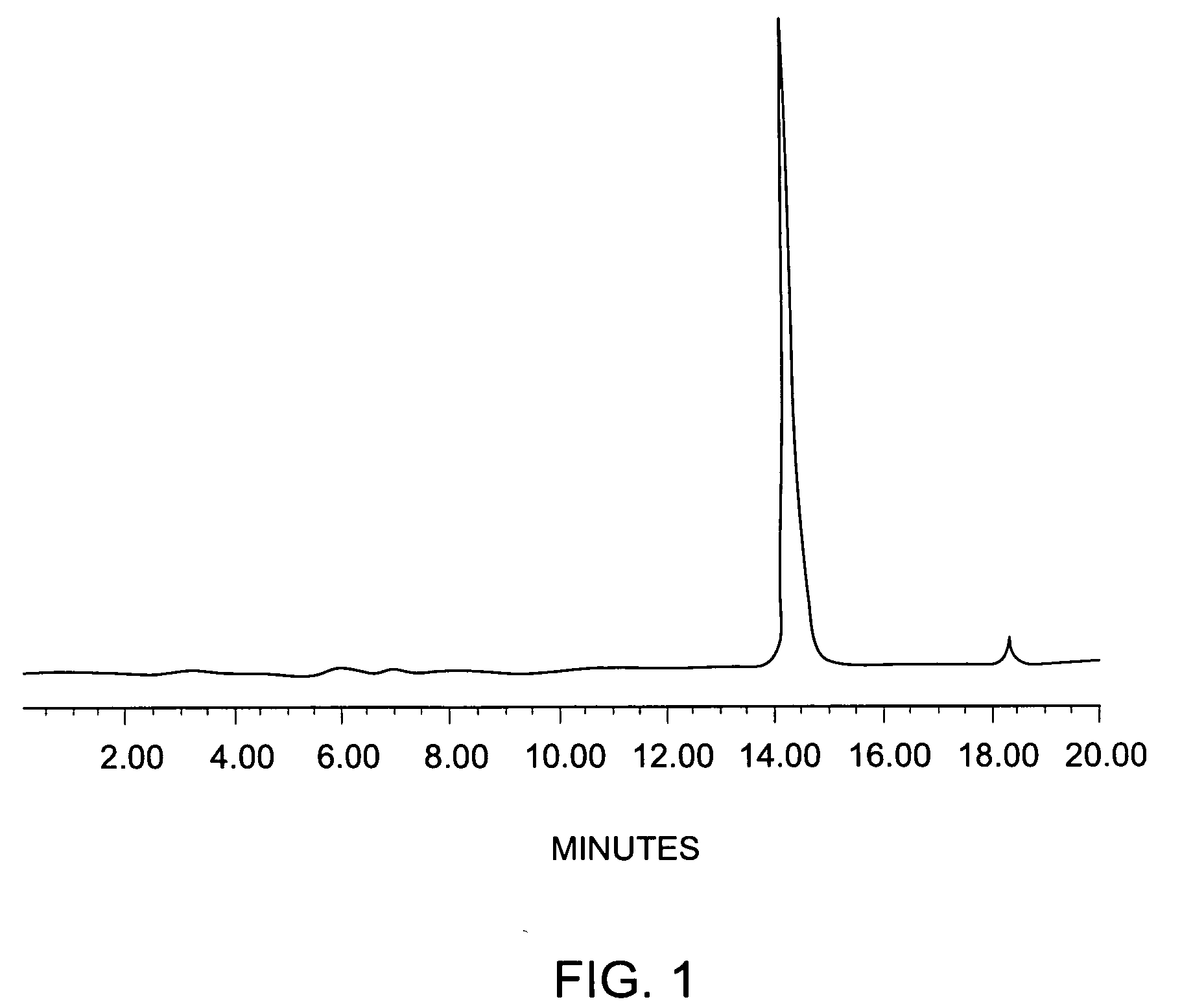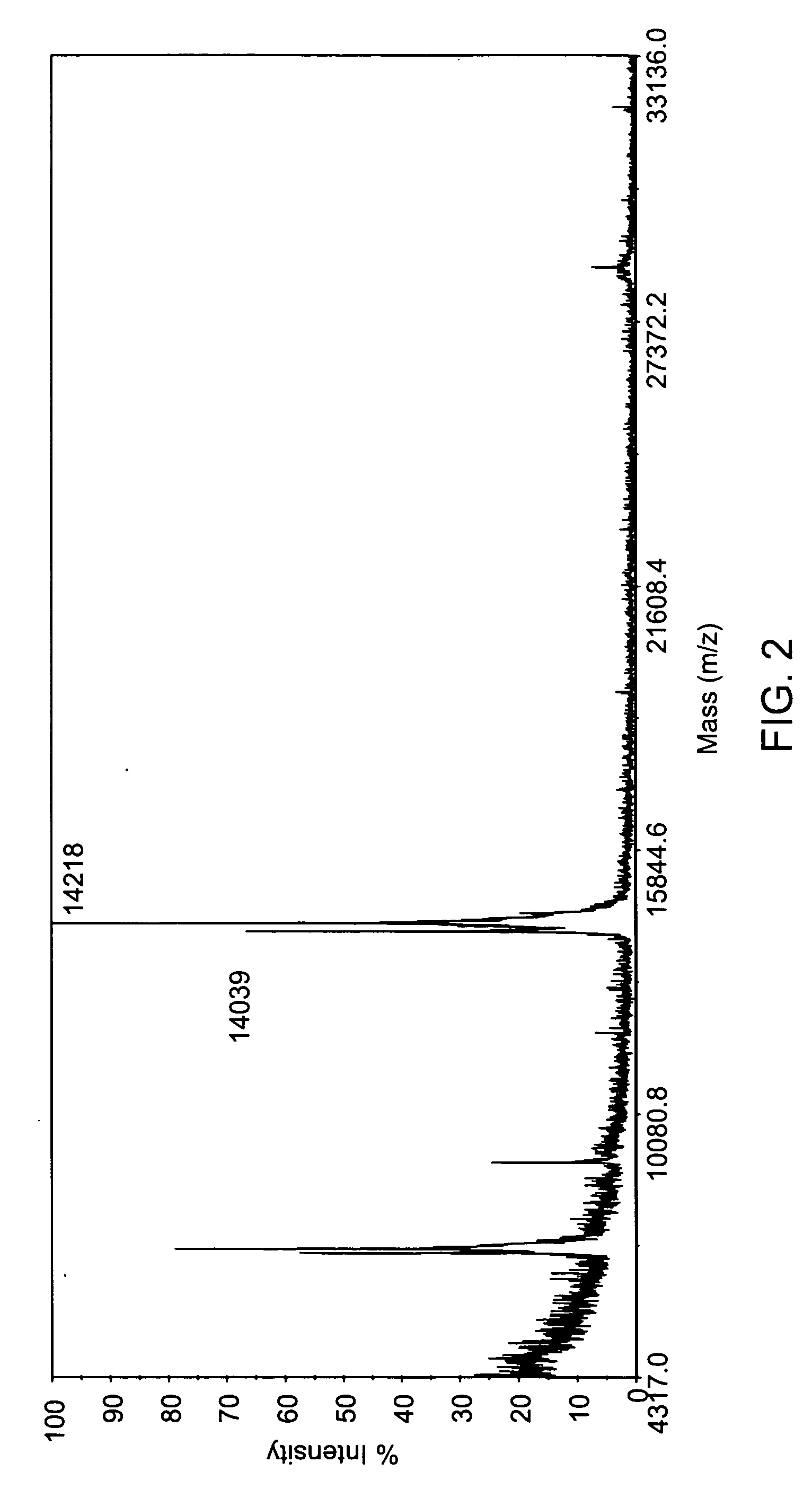Fluorine-labeled compounds
a technology of fluorine and labeling compounds, applied in the field of fluorine labeling compounds, can solve the problems of site-selective addition becoming increasingly difficult, and the protection-deprotective approach is not readily applicable to biologically produced polypeptides
- Summary
- Abstract
- Description
- Claims
- Application Information
AI Technical Summary
Benefits of technology
Problems solved by technology
Method used
Image
Examples
example 1
[0064]Procedure for preparing the bifunctional compound tert-butyl 2-(5-(2-(2,5-dioxo-2,5-dihydro-1H-pyrrol-1-yl)ethylcarbamoyl)pyridin-2-yl)hydrazinecarboxylate, abbreviated as “Mal-HYNIC-Boc”.
To a solution of HYNIC (50 mg, 0.197 mmol) in anhydrous dichloromethane (4 mL) was added sequentially triethylamine (27 μL, 0.197 mmol), N-(2-aminoethyl)maleimide-TFA salt (50 mg, 0.197 mmol), HOBT (30 mg, 0.197 mmol), and 1-Ethyl-3-(3-dimethylaminopropyl)carbodiimide (EDC; 42 mg, 0.217 mmol). After being stirred at room temperature overnight, the reaction mixture was diluted with ethyl acetate (25 mL) and washed with saturated sodium bicarbonate solution (25 mL), water (25 mL), and brine (25 mL). The organic layer was dried over anhydrous magnesium sulfate and filtered. The filtrate was concentrated to a residue, which was purified by column chromatography (10% dichloromethane in methanol) to give 40.5 mg (55 percent of theory) of Mal-HYNIC-Boc.
example 2
[0065]Procedure for preparing the bifunctional compound N-(2-(2,5-dioxo-2,5-dihydro-1H-pyrrol-1-yl)ethyl)-6-hydrazinylnicotinamide hydrochloride, also abbreviated as “Mal-HYNIC—HCl”.
[0066]A solution of 15 mg of Mal-HYNIC-Boc in 1 mL of 3 molar hydrochloric acid was prepared and stirred at room temperature for 18 hours. The solvent and other volatile materials were evaporated under vacuum to yield a glassy yellow solid.
[0067]In another approach, when TFA was used to deprotect the Boc group, the resulting deprotected hydrazine group reacted with the TFA to give amide side products formed by reaction of the deprotected hydrazide with TFA.
example 3
[0068]Preparation for Preparing the Bifunctional Compound Tert-Butyl 2-(2-(2,5-dioxo-2,5-dihydro-1H-pyrrol-1-yl)ethylamino)-2-oxoethoxycarbamate, abbreviated as “Mal-AO-Boc”.
[0069]To a solution of 2-(tert-butoxycarbonylaminooxy)acetic acid (382 mg, 2 mmol) in anhydrous dichloromethane (20 mL) was added sequentially triethylamine (307 μL, 2.2 mmol), N-(2-aminoethyl)maleimide-TFA salt (508 mg, 2 mmol), HOBT (306 mg, 2 mmol), and EDC (420 mg, 2.2 mmol). After being stirred for 24 hrs at room temperature, the reaction mixture was diluted with ethyl acetate (50 mL) and washed with saturated sodium bicarbonate solution (3×30 mL), water (30 mL), and brine (30 mL). The organic layer was dried over anhydrous magnesium sulfate and filtered. The filtrate was concentrated to a pale yellow solid, which was purified by column chromatography (70% ethyl acetate in hexanes) to give the product as a white powder (500 mg, 80% of theory).
PUM
| Property | Measurement | Unit |
|---|---|---|
| Temperature | aaaaa | aaaaa |
Abstract
Description
Claims
Application Information
 Login to View More
Login to View More - R&D
- Intellectual Property
- Life Sciences
- Materials
- Tech Scout
- Unparalleled Data Quality
- Higher Quality Content
- 60% Fewer Hallucinations
Browse by: Latest US Patents, China's latest patents, Technical Efficacy Thesaurus, Application Domain, Technology Topic, Popular Technical Reports.
© 2025 PatSnap. All rights reserved.Legal|Privacy policy|Modern Slavery Act Transparency Statement|Sitemap|About US| Contact US: help@patsnap.com



